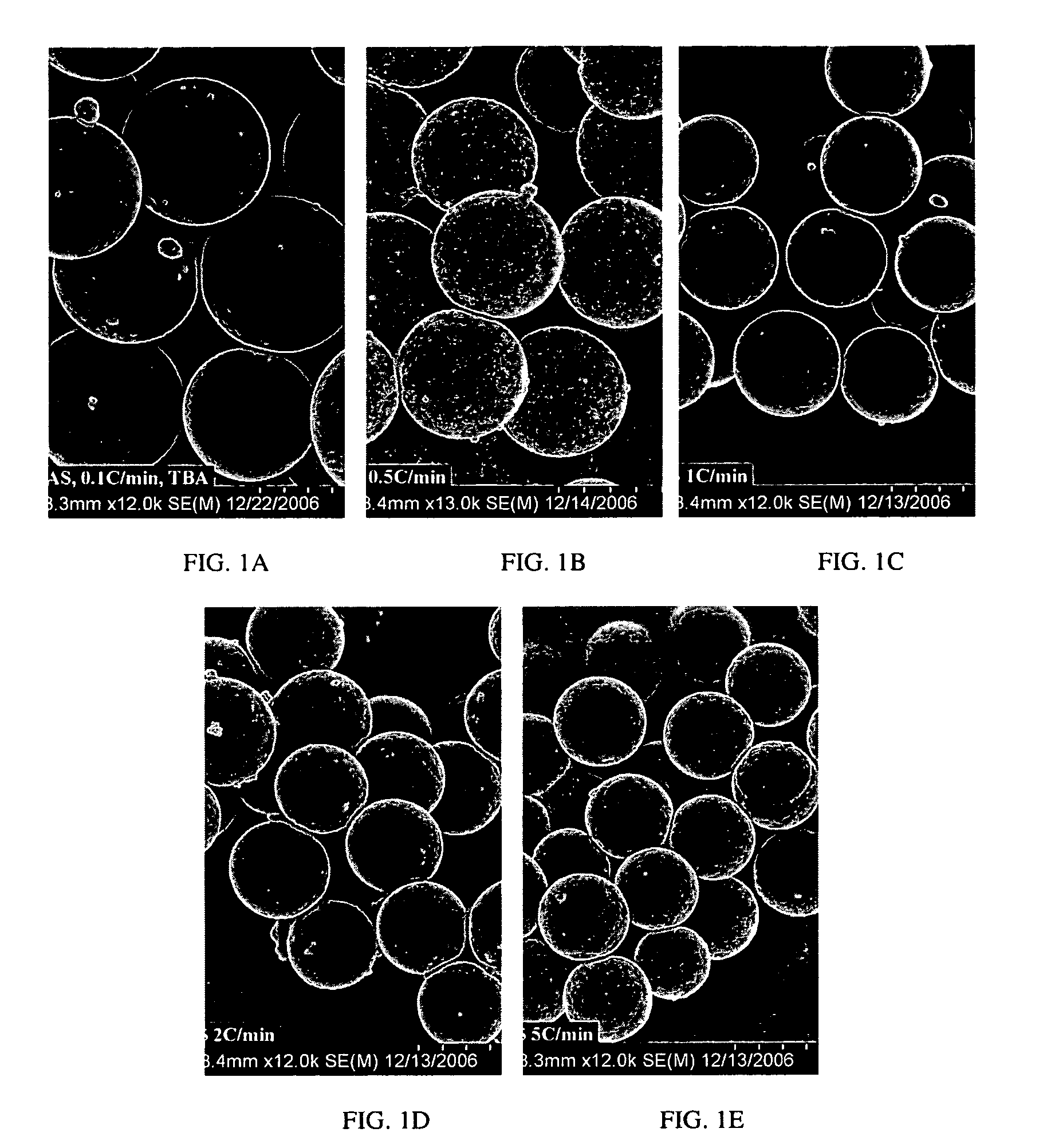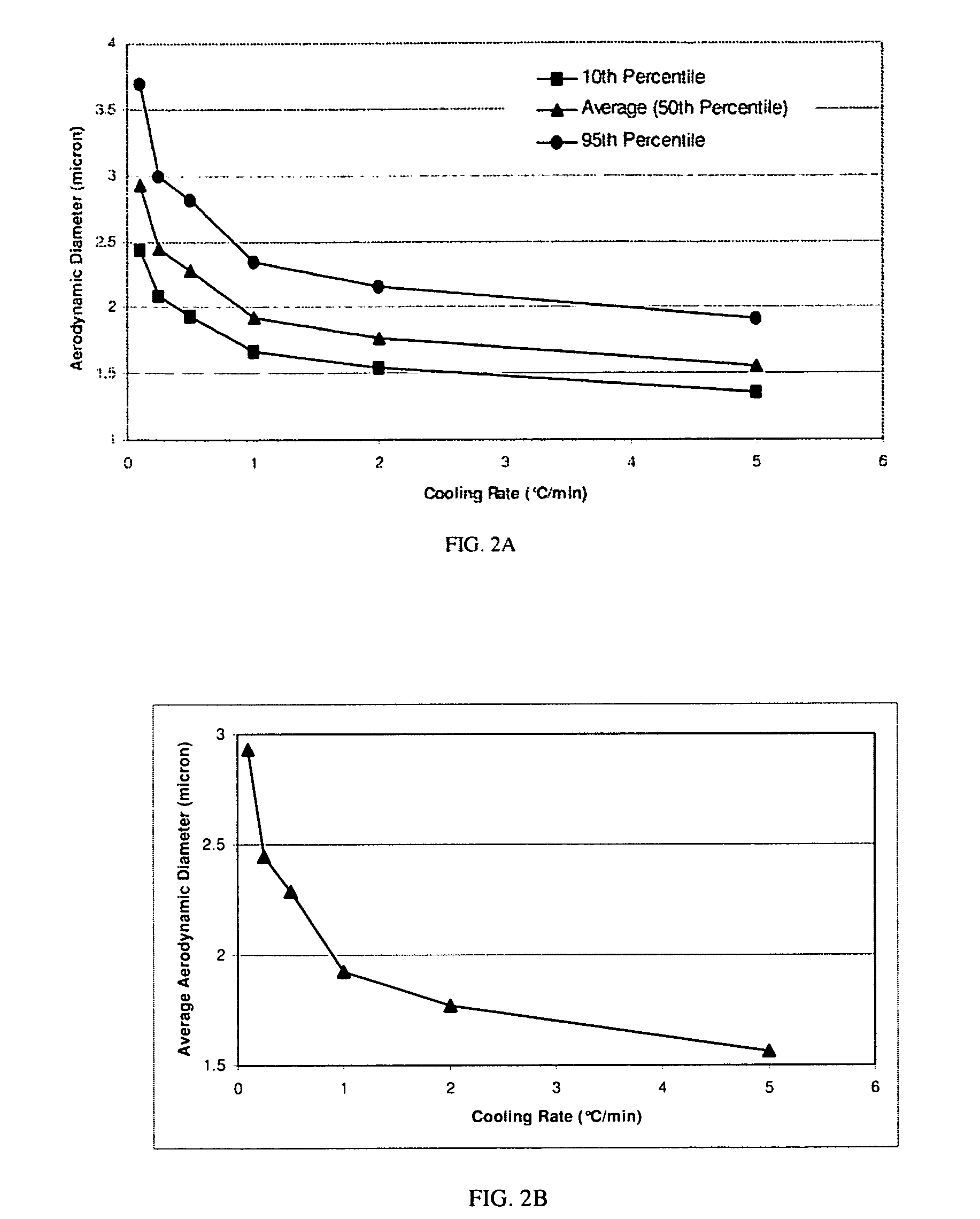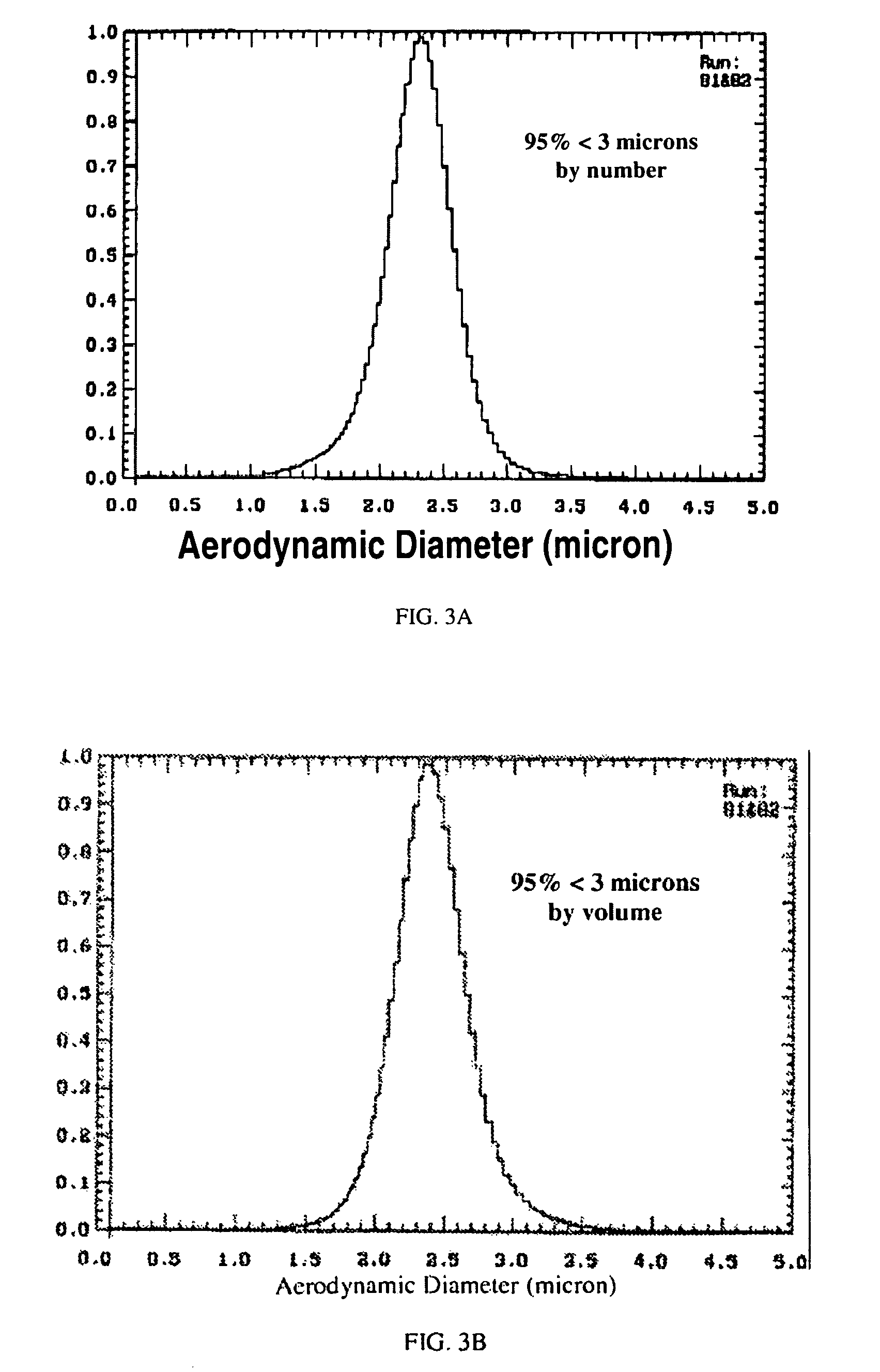Nucleic acid microparticles for pulmonary delivery
a nucleic acid microparticle and pulmonary technology, applied in the field of preparation of nucleic acid microparticles, can solve the problems of poor loading efficiency of microparticles produced using polymers such as these, lack of uniformity, and inability to exhibit the desired release kinetics
- Summary
- Abstract
- Description
- Claims
- Application Information
AI Technical Summary
Benefits of technology
Problems solved by technology
Method used
Image
Examples
example 1
Materials Used for the Preparation of Exemplary Microparticles
[0234]The following materials were used in the preparation of exemplary microparticles of the disclosure. While specific nucleic acids and siRNAs are provided for exemplary examples, similar microparticles can be prepared using other nucleic acids and oligonucleotides.
[0235]All aqueous solutions were prepared using nuclease-free, de-ionized water that was autoclaved and sterile filtered through a 0.2-micron filter.
[0236]Nucleic acid solutions were prepared at a concentration of about 15 mg / ml in water. Exemplary antisense oligodeoxynucleotides (anti-CD40, anti-CD80, anti-CD86) used in the methods described herein are commercially available in HPLC-purified lyophilized preparations. These oligonucleotides phosphorothioated in the oligonucleotide backbone and are available from Integrated DNA Technologies, (Coralville, Iowa).
[0237]Various siRNA compositions are used for the microparticles prepared herein. The siRNA molecule...
example 2
Exemplary Microparticles of Antisense Oligonucleotides Prepared with Ca2+ as a Cation
[0243]The following example provides two exemplary processes for the preparation of Ca2+-containing antisense oligonucleotide-based microparticles of the disclosure.
[0244]Preparation Process 1:
[0245]In this process, a series of six reaction mixtures was prepared in which each reaction mixture contained the non-ionic polymer solution, the salt solution and the nucleic acid solution. Briefly, aliquots of non-ionic polymer solution A were dispensed into a vessel such that two-thirds of each final reaction mixture would contain solution A. Salt solution (5M CaCl2 stock solution, pH 5.5) and water were added to the non-ionic polymer aliquots such that Ca concentrations in the final reaction mixtures were 0.1M, 0.17M, 0.33M, 0.67M, 1M, and 1.25M, respectively. Aliquots of antisense nucleic acid solution were prepared such that when these aliquots of nucleic acid solution were added to the final reaction m...
example 3
Exemplary Microparticles of Antisense Oligonucleotides Prepared with Zn2+ as a Cation
[0257]In this process, a series of seven reaction mixtures was prepared in which each reaction mixture contained the non-ionic polymer solution, the salt solution and the nucleic acid solution. Briefly, aliquots of non-ionic polymer solution A were dispensed into a vessel such that two-thirds of each final reaction mixture would contain solution A. Aliquots of antisense nucleic acid solution were prepared such that when these aliquots of nucleic acid solution were added to the final reaction mixture, the concentration of the antisense nucleic acid in each final reaction mixture would be 0.206 mM.
[0258]A 4M ZnCl2 stock solution (pH 4) was used to prepare aliquots of the salt solution through dilution with water such that the Zn concentrations in the initial salt with nucleic acid mixtures when the aliquots were added to the reaction mixtures would be 0.1M, 0.33M, 1M, 2M, and 3M, respectively.
[0259]Th...
PUM
 Login to View More
Login to View More Abstract
Description
Claims
Application Information
 Login to View More
Login to View More - R&D
- Intellectual Property
- Life Sciences
- Materials
- Tech Scout
- Unparalleled Data Quality
- Higher Quality Content
- 60% Fewer Hallucinations
Browse by: Latest US Patents, China's latest patents, Technical Efficacy Thesaurus, Application Domain, Technology Topic, Popular Technical Reports.
© 2025 PatSnap. All rights reserved.Legal|Privacy policy|Modern Slavery Act Transparency Statement|Sitemap|About US| Contact US: help@patsnap.com



